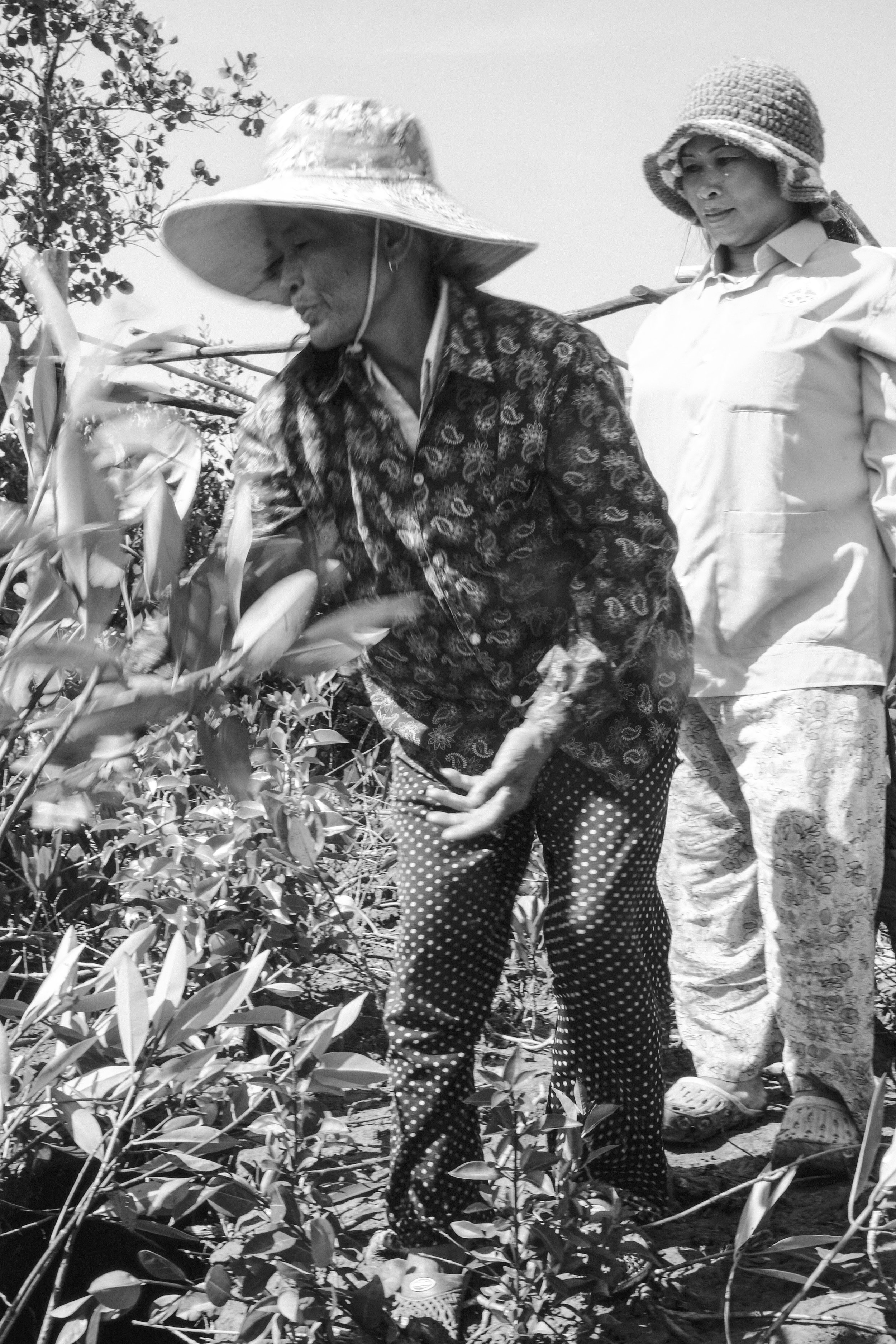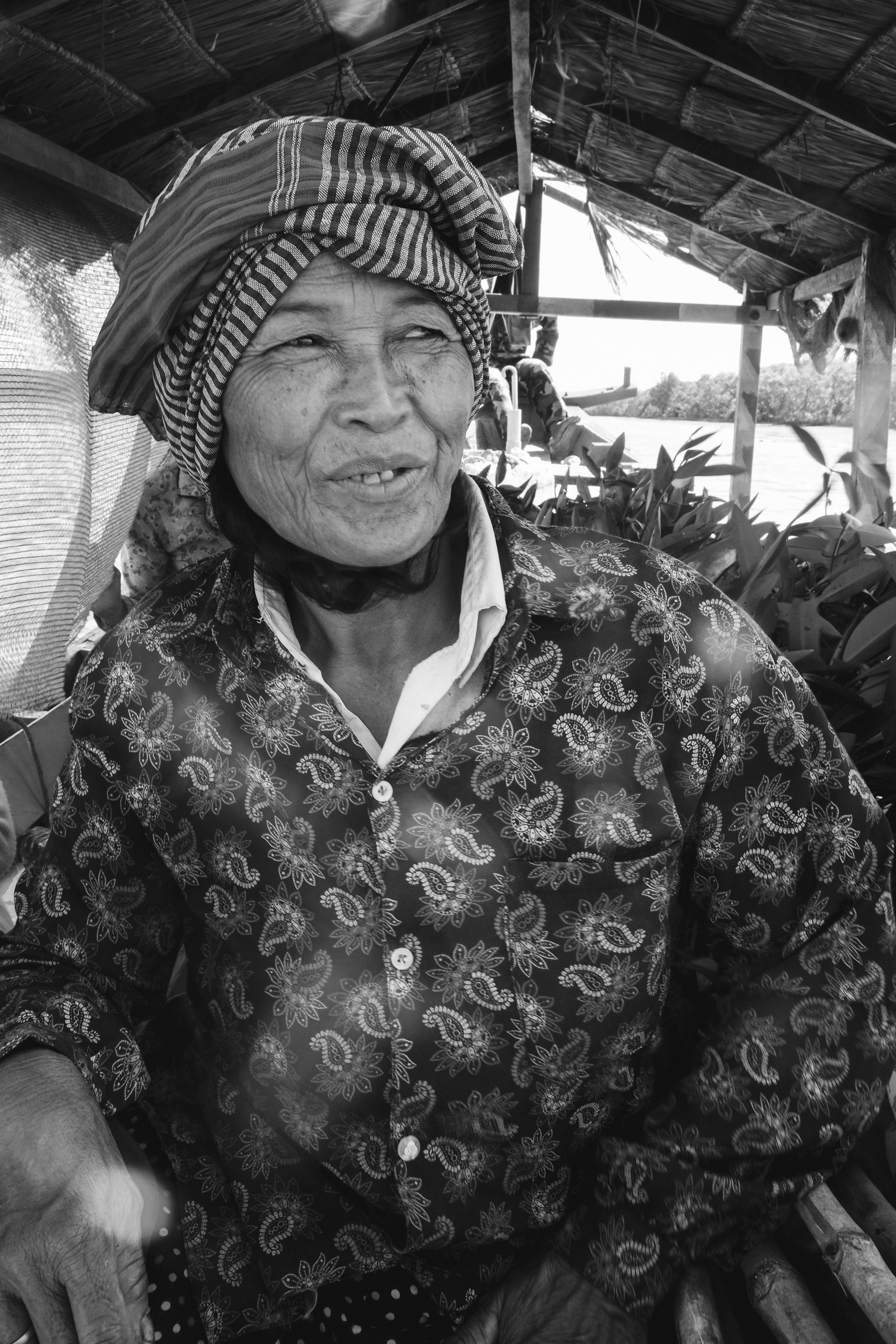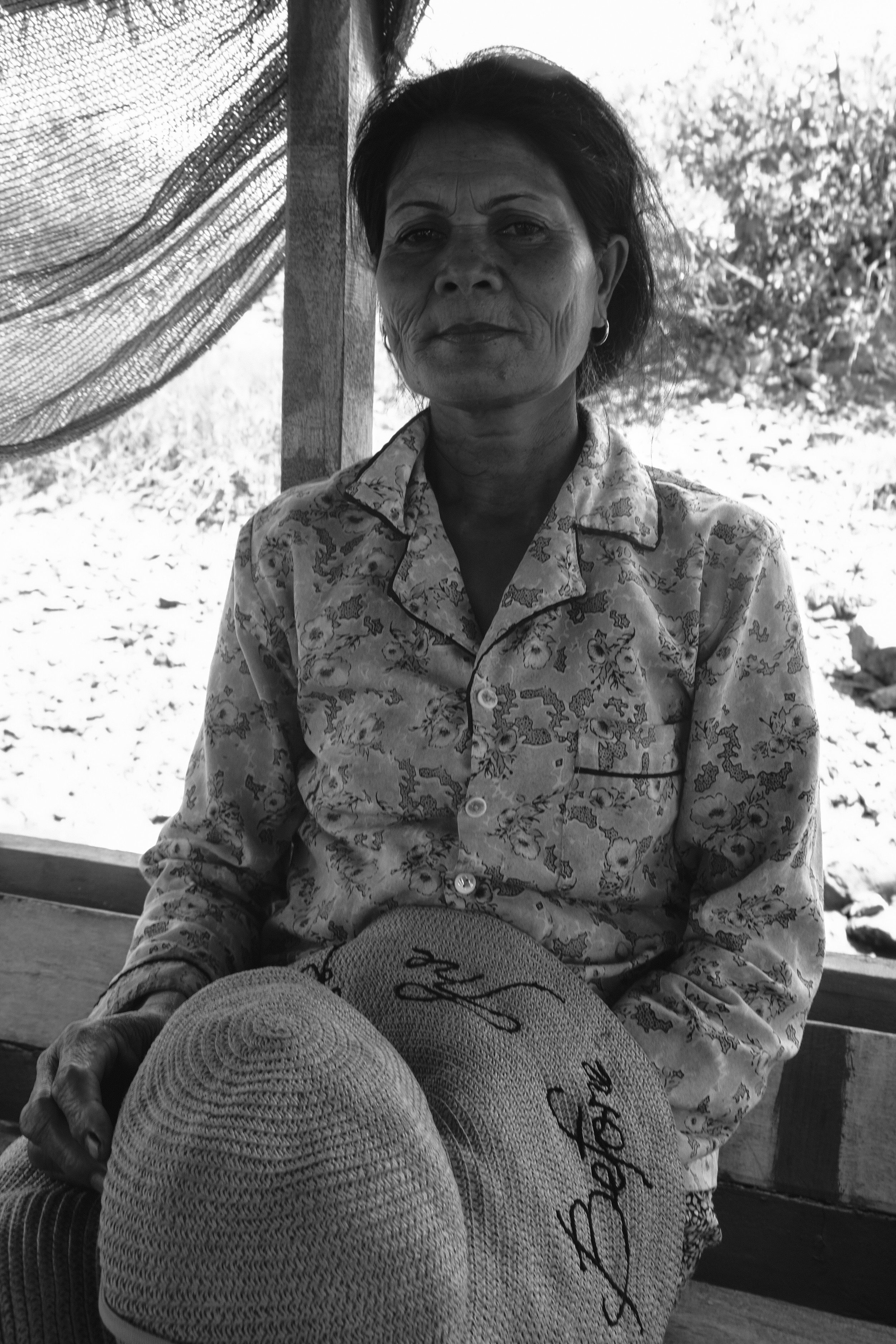Produced for The Learning Institute. Originally published in the Learning Institute website on August 29, 2017
In 2008, The Learning Institute (then known as CBNRM Learning Institute) issued a study entitled The Roles, Needs and Aspirations of Women in Community Fisheries in Cambodia, using six Community Fisheries (CFi’s) from the Tonle Sap Lake, Mekong River and Coastal regions for the case study.
The study confirmed the general observations that women’s main role and responsibilities lie in household work and caring for their children while men are in charge of generating an income for the family. But it is worth pointing out that there were shifts in these traditional gender division roles as women were increasingly engaging in activities that contribute towards generating income for the family.
One of the ongoing projects at The Learning Institute, funded by Southeast Asian Fisheries Development Center (SEAFDEC), is Strengthening Community Fisheries Management and Livelihood Diversification in Cambodia. It is currently being implemented in the Battambang, Kampong Chhnang, Kampot, Kep, Pursat and Sihanouk provinces and a significant purpose of the project is to improve the recognition of the role of women in order to integrate a gender perspective.
The activities within the project includes public campaigning and awareness within the community, holding public forums, meetings with the commune and the Fisheries Administration personnel and also restoration of the conservation zone by patrolling and planting mangroves.
Community Fisheries (CFi's) were introduced in Cambodia in the late 1990s to improve the management of local fisheries and also to ensure local food security [1]. The Ministry of Agriculture, Forestry and Fisheries, Cambodia (MAFF) 2015/2016 annual report states that there are 561 CFi’s (of which 377 are licensed and recognized by the MAFF) currently functioning in Cambodia, yet they all continue to face similar challenges such as illegal and destructive fishing and fishing methods.
These Community Fisheries were envisaged as a “community to harvest fish” and not as a cooperative of fish producers. The distinction is important” it was as an institution in which all members of the community – adult men and women and young people – could participate, but the primary focus of the activity was intended to be on the harvesting of fish from the fishery domains created in accordance with the area agreement.
Kurien, J. (2017). Community Fisheries Organizations of Cambodia: Sharing processes, results and lessons learned in the context of the implementation of the SSF guidelines. 58.
The Kampong Samaki CFi in the Kampot province is one of the seven communities whom The Learning Institute is working with. Although set up in 2006, it wasn’t until 2011 that they were officially registered as a CFi. The Kampong Samaki CFi was created through the collaborative efforts of Kompong Thnot and Kompong Noun villages and it covers 578 hectares of which 528 hectares is a fishing area while the other 50 hectares is a conservation zone.
There was also a hope that the creation of this CFi would protect the mangrove forests. The hope was that protecting the mangrove forest would create a renewed fishing habitat hence preserving the declining natural resources. About 65% of the Kampong Samaki CFi residents earn their income by fishing while the rest depend on other forms of livelihood like rice farming, crab and shrimp fishing as well as selling fuel and fishing material.
The Kampong Samaki CFi was established in 2006. Before the establishment of the CFi, private investors had sought access to mangrove and coastal areas for shrimp farming and salt pans. NGO’s and other agencies supported the development of the CFi to protect the mangrove forest and coastal areas from privatization.
Penisten J. (2012). Hawaii, The Big Island. 23
The importance and subject of the role of women in fishing communities and fisheries management is not documented enough but it has been accepted that women are equally involved in every aspect of fisheries-related activities.
Through The Roles, Needs And Aspirations Of Women In Community Fisheries In Cambodia, the study observed an increasing involvement of women in CFi activities, particularly in savings groups and information dissemination.
Women are visible and prominent in the establishing and managing a saving group because of the traditional norm that financial management is a woman’s responsibility in the household. While this may still be true, it seems that the women in the CFi’s have found other activities to involve themselves in.
Heoun Sarin (51), Khuy Mom (52) and Soun Sokha (41) are three of the many women from the Kampong Samaki CFi who are actively involved in the CFi activities.
While Sarin, Mom and Sokha are all CFi members, Sokha also holds the role of finance and administration. She has worked with the community since its establishment (in 2006) as a member and was voted in as a committee member in 2013.
Sokha has been involved in community activities to help build bridges, community buildings and planting mangroves as well as collecting mangrove seeds.
“I do it so that the next generation can see the beautiful natural resources and the community improvements. I do it for them because they can see us in them when we’re no longer there in the future. I do it because my mother used to do the same for me.”.
As mothers, the three of them have a collective fear for their children as they do not want them to endure the same hardships as they do. With five children, of which her older two daughters work in a factory in Phnom Penh, Sarin has three younger sons who are still in school and says “I am afraid because I am poor so I do not have ability to support them. What my husband and I can do is to try to work hard for the family. I really want to see them live a better life”.
Sarin joined as a CFi member five years ago and is very grateful to the community for not only accepting her but also for giving her a home. “I love them and want to help the community” she says earnestly. Originally from Takeo province, Sarin moved to Kampot in 1993, initially living with her sister in law. Her family then moved to work in the salt pans while living in a nearby hut. But working in the salt pans wasn’t a full-time job and life was beginning to get difficult but fortunately for her, the community recognized their struggles and in the pursuit of finding people to take care of the mangrove farms, Sarin and her family were assisted by the community and given housing as well. Besides this, she also sells sea food in the market. Another collective concern that the three women have is for the sustainability and the development of their community. It was the many cases of land grabbing along he sea that made 52-year-old Mom join the community activities.
“Land grabbing” refers to large-scale land acquisitions, mainly by private investors but also by public investors and agribusiness that buy farmland or lease it on a longer-term basis to produce agricultural commodities. These international investors, as well as the public, semi public or private sellers, often operate in legal grey areas and in a no man’s land between traditional land rights and modern forms of property. In many cases of land grabbing, one could speak of a land reform from above or of the establishment of new colonial relations imposed by the private sector [2].
In the case of the residents of Kampong Nesad Samaki in 2008, it was 72 hectares of mangrove forests said to have been illegally deeded to four local officials. The then Provincial Governor of Kampot, Thach Korn, said the land was being returned to the villagers’ care “as state land” [3].
The mangroves are essential for the benefit of the community, the environment and for marine life and Sarin, Mom and Sokha are all involved in the preservation and conservation of the mangroves by volunteering to help and plant the mangroves (an activity that has been implemented by The Learning Institute for the project). Sarin hopes that their village too will become an ecotourism community like their neighboring CFi (Trapang Sanke eco tourist community). But for changes to take place, there needs to be a cooperative and collaborative effort for which the women seem to be playing a big role these days.
“The community chief and other community members always invite us to join when they have any activities. They also mobilize community members to work together. I am interested in these activities and volunteer to do it by myself” said Mom, who along with Sarin, is also part of the patrolling duty that keeps an eye out for illegal fishing activities, another major problem faced by fishing communities. Sarin observes that while both men and women participate similarly, it’s mostly men who are the leaders. “However, when women raise their ideas, men pay attention too” she adds.
Sokha has a different approach to gender. It wasn’t just about women working within her community but about girls and women in general. For her, it’s not so much inequality but about security and a cultural mindset.
“Gender issues (in Cambodia) is being promoted much more and this is leading to more improvements. Nowadays, women can go to school, work and do anything that men do. The challenge is security. It’s not secure enough for girls or women to go out alone”. While talking about the activities in her community, she believes that there should be a continued effort to motivate women to not only raise ideas but participate more during meetings too.
John Kurien’s 2017 research Community Fisheries Organization of Cambodia shows that the gender and age profile of the Community Fisheries membership were more or less the same across the three regions of his study (Tonle Sap, Mekong and Marine). However, Kurien also adds that the role of the women in the community was singled out by Focus Group Discussions (FGD) for the crucial role they play.
It was only once they (women) formally joined the CFi that their status as “fishers” were recognized thus providing them with a strong voice in CFi decisions. Thereafter, the role of women as a key factor in both conservation efforts and in the negotiating and educating of illegal fishers, was highlighted.
So, for the success of Community Fisheries in Cambodia, the role of the women cannot be disregarded.
NOTES:
[1] - https://opendevelopmentcambodia.net/topics/community-fisheries/
[2] - http://www.globalagriculture.org/report-topics/land-grabbing.html
[3] - http://cambodiadaily.com/archives/kampot-returns-mangrove-land-to-villagers
SOURCES:
1. Phone interview with Heoun Sarin, Khuy Mom and Soun Sokha translated from English to Khmer by Ork Sereirath, Kong Phidor and Khun Chanthorn from The Learning Institute.
2. Channyda, C. (2008, June 13). Kampot Returns Mangrove Land To Villagers. Cambodia Daily. Retrieved from: http://webcache.googleusercontent.com/search?q=cache:CSlhVOcPVTQJ:https://www.cambodiadaily.com/ archives/kampot-returns-mangrove-land-to-villagers-58106/&num=1&client=safari&hl=en&strip=1&vwsrc=0
3. Global Agriculture. Retrieved from: http://www.globalagriculture.org/report-topics/land-grabbing.html
4. Kunthear, M. and Chamroeun, C. (2008, July 11). Cautious Kampot Villagers Await Return Of Mangroves. The Phnom Penh Post. Retrieved from: http://www.phnompenhpost.com/national/cautious-kampot-villagers-await-returnmangroves
5. Kurien, J. (2017). Community Fisheries Organizations of Cambodia: Sharing Processes, Results And Lessons Learned In The Context Of The Implementation Of The SSF Guidelines. 58. Retrieved from: http://www.fao.org/3/ai7206e.pdf
6. Learning Institute neé CBNRM Learning Institute (2008). The Roles, Needs and Aspirations Of Women In Community Fisheries In Cambodia.
7. Open Development (2015, September 07). Community Fisheries. Retrieved from: https:// opendevelopmentcambodia.net/topics/community-fisheries/
8. Penisten J. (2012). Hawaii, The Big Island. 23. Retrieved from: https://books.google.com.kh/books?id=zuy6RT0HaNEC&pg=PP8&dq=Kampong+Samaki+fishing&hl=en&sa=X&ved=0ahUKEwin_NKvxuDVAhVF vbwKHUrNB80Q6AEIJjAA#v=onepage&q&f=false








